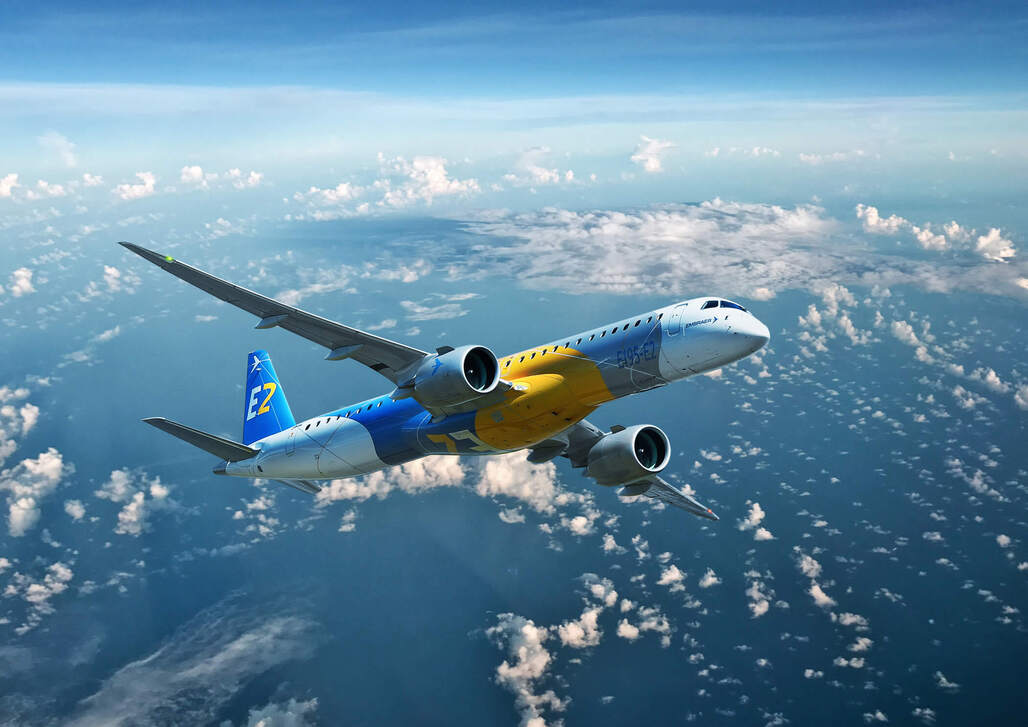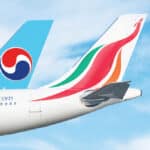Embraer has secured 120-minute ETOPS (Extended-Twin Engine Operations Performance Standards) approval for both the E190-E2 and E195-E2 aircraft.
This approval has been granted from leading aviation authorities: ANAC (Brazil), FAA (US), and EASA (Europe).
This achievement unlocks a world of possibilities for E2 operators.
Direct Route Operations
With ETOPS-120 certification, airlines can now operate these jets on more direct routes, bypassing limitations over water or remote areas.
This translates to significant time and fuel savings, making the E2 an even more attractive option.
ETOPS-120 approval is a strong endorsement of the E2’s design and advanced systems. This rigorous certification process involves reaching specific flight hour milestones to demonstrate the aircraft’s operational maturity.
While the global pandemic caused a slight delay due to reduced flying hours, E2 operators can now leverage this enhanced capability.

Enhanced Efficiency for Asia Pacific Region
Arjan Meijer, President and CEO of Embraer Commercial Aviation, highlights the significance of ETOPS-120 for the E2, particularly in the Asia Pacific region.
Airlines can now access more direct routes with shorter flying times and explore a wider range of diversion airports, all while maximizing fuel efficiency – a key strength of the E2 family.

Ensuring Safety: The ETOPS Process
ETOPS certification is a two-pronged approach, ensuring both the aircraft and the operator meet the highest safety standards.
- Aircraft Design: The manufacturer demonstrates the aircraft’s ability to be safely flown on one engine, minimizing risk to the airframe and crew.
- Operational Excellence: Airlines must showcase their commitment to safety through comprehensive crew training and meticulous maintenance procedures. Pilots, engineers, and dispatchers must possess the necessary ETOPS qualifications.
The E2, now with ETOPS-120 capability, offers airlines an unbeatable combination of efficiency, range, and safety. This paves the way for even greater flexibility and route options

Understanding ETOPS
ETOPS stands for Extended-range Twin-engine Operations Performance Standards.
It’s a set of regulations that govern how long twin-engine aircraft can fly on one engine in case of an emergency.
These rules apply to flights that take the plane further than one hour away from a suitable airport where it could land with a single engine.

Here’s the gist of ETOPS:
- Safer Long-Haul Flights: ETOPS allows twin-engine planes to fly more efficient routes, including long distances over water or remote areas. Before ETOPS, such routes were restricted to planes with three or four engines.
- Minimum Diversion Time: ETOPS ratings are designated by the maximum time (in minutes) a plane can fly on one engine to reach a suitable alternate airport. Common ratings are ETOPS 120 (2 hours), ETOPS 180 (3 hours), and some aircraft even have ratings for longer durations.
- Rigorous Safety Standards: To qualify for the certification, aircraft must meet extremely strict safety requirements. This includes reliable engines, redundant systems, and meticulous maintenance procedures.
ETOPS has been instrumental in making twin-engine aircraft a viable option for long-haul flights, offering greater efficiency for airlines and passengers.

Click the banner to subscribe to our weekly newsleter.

Click the photo to join our WhatsApp channel so then you can stay up to date with everything going on in the aviation industry!







